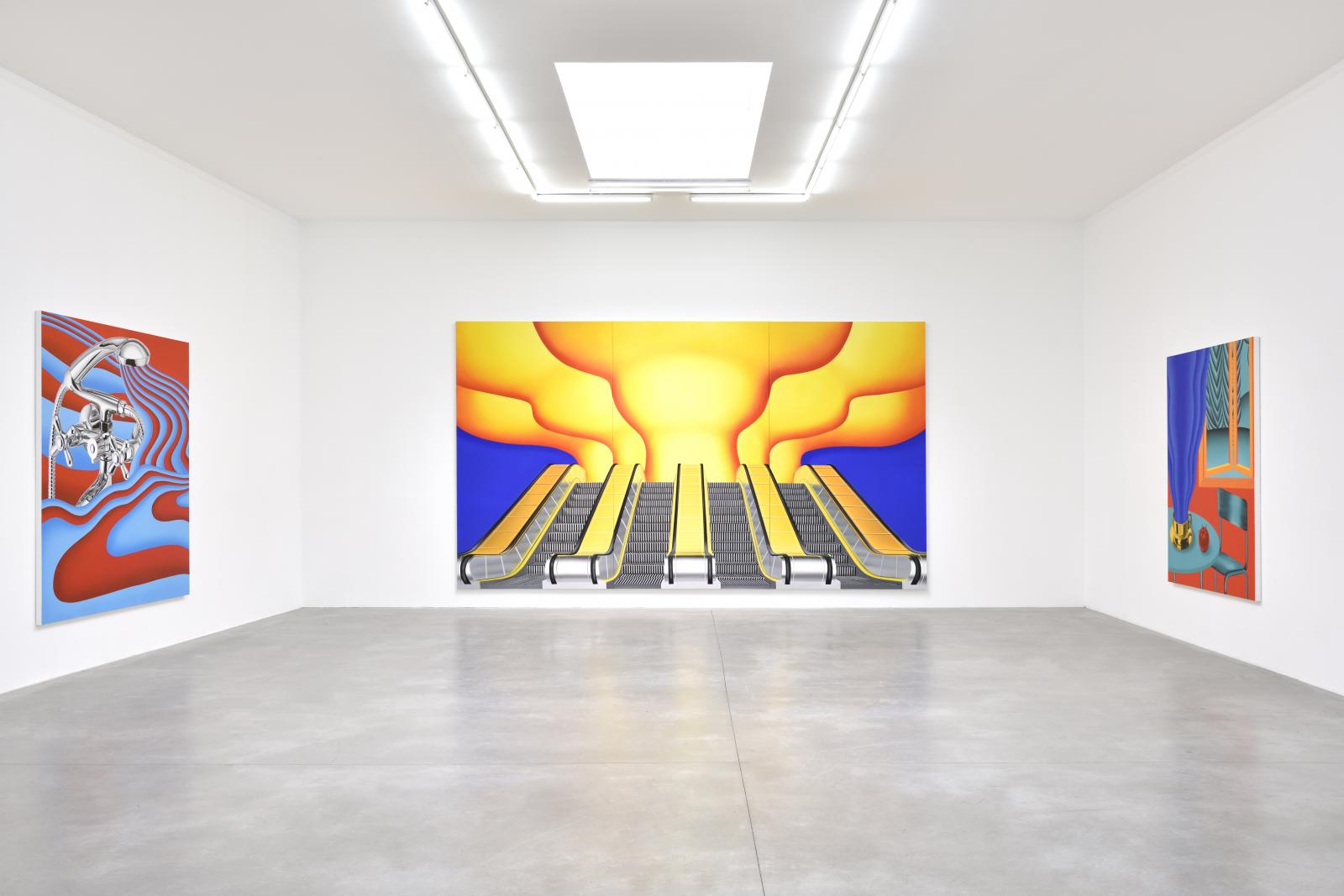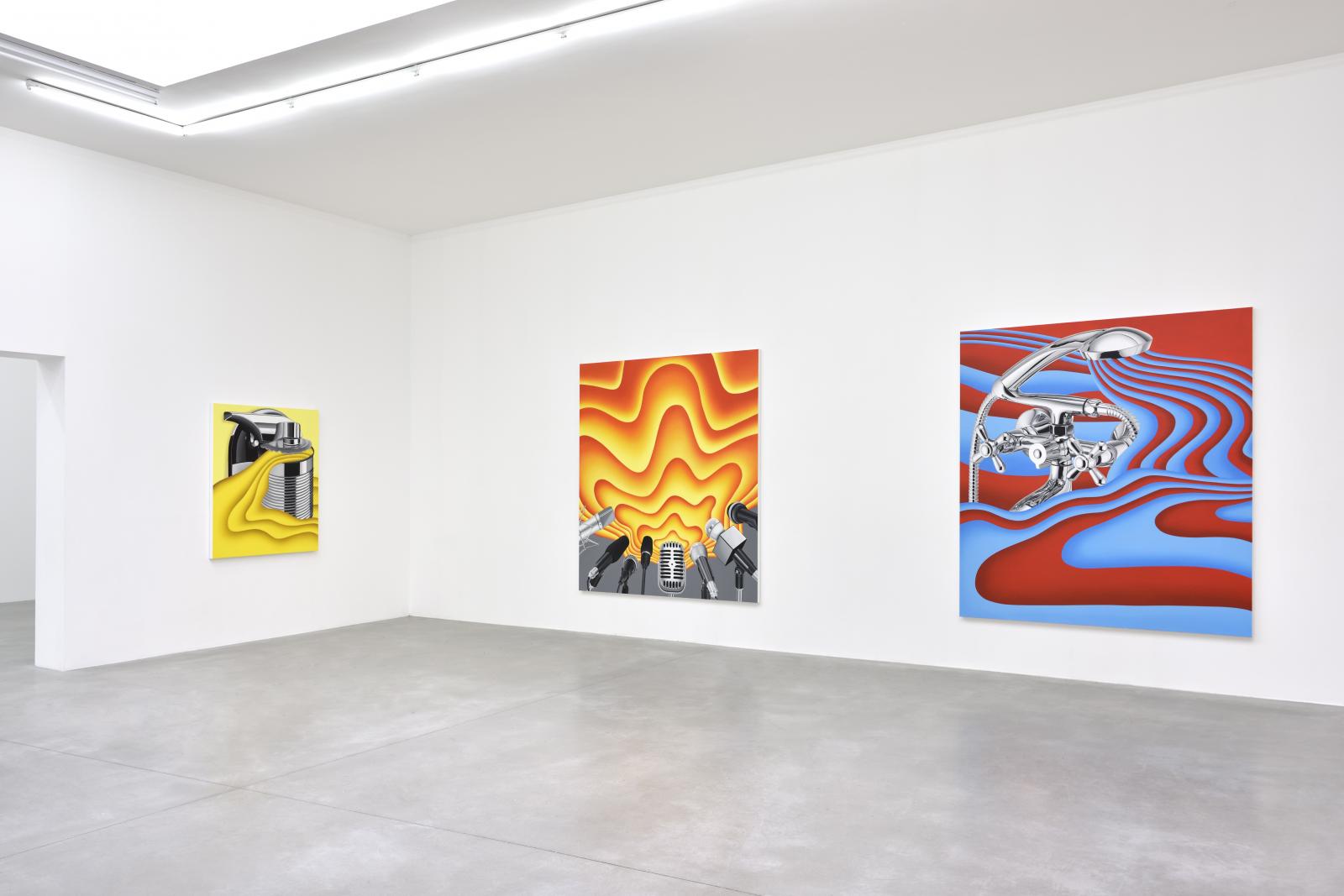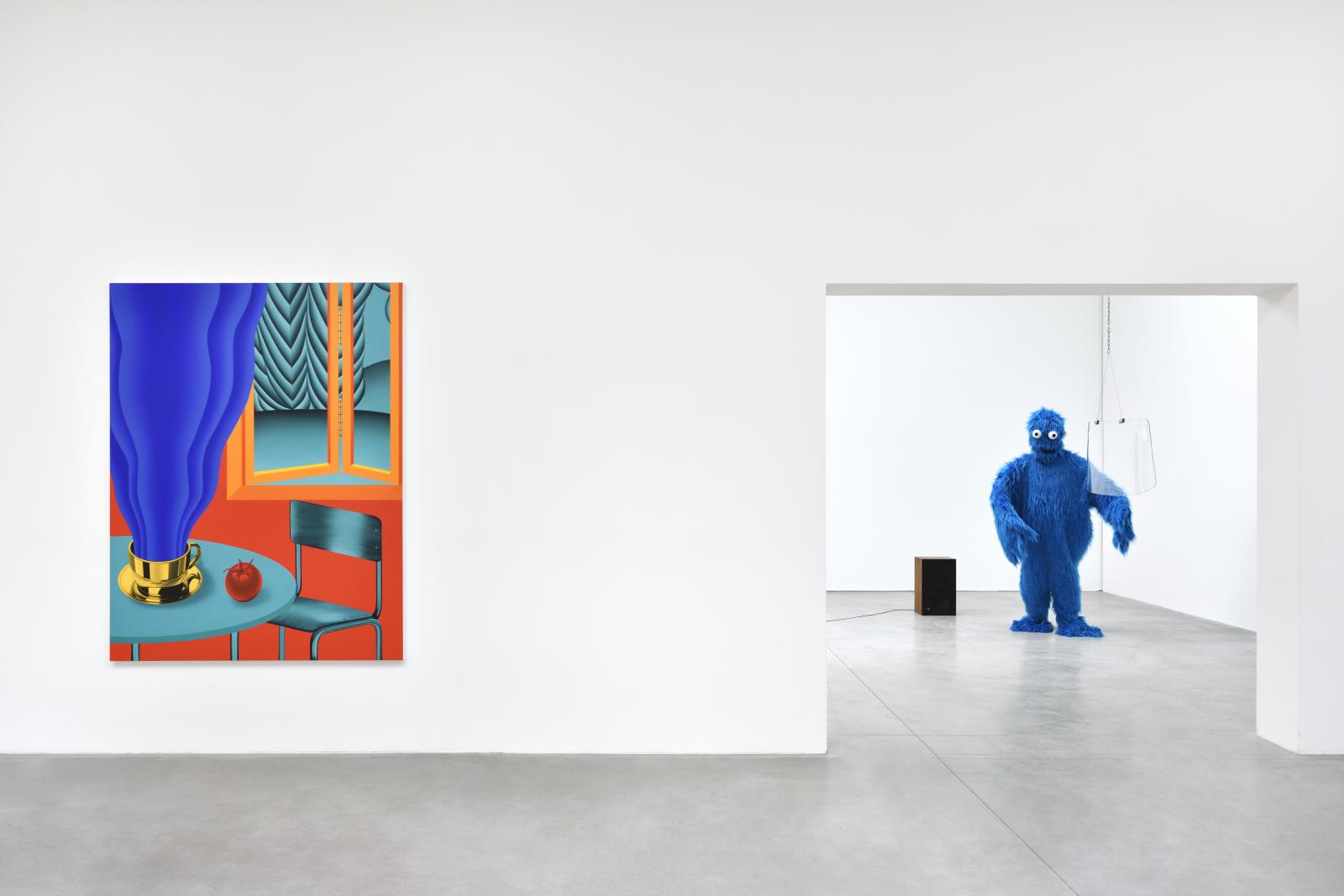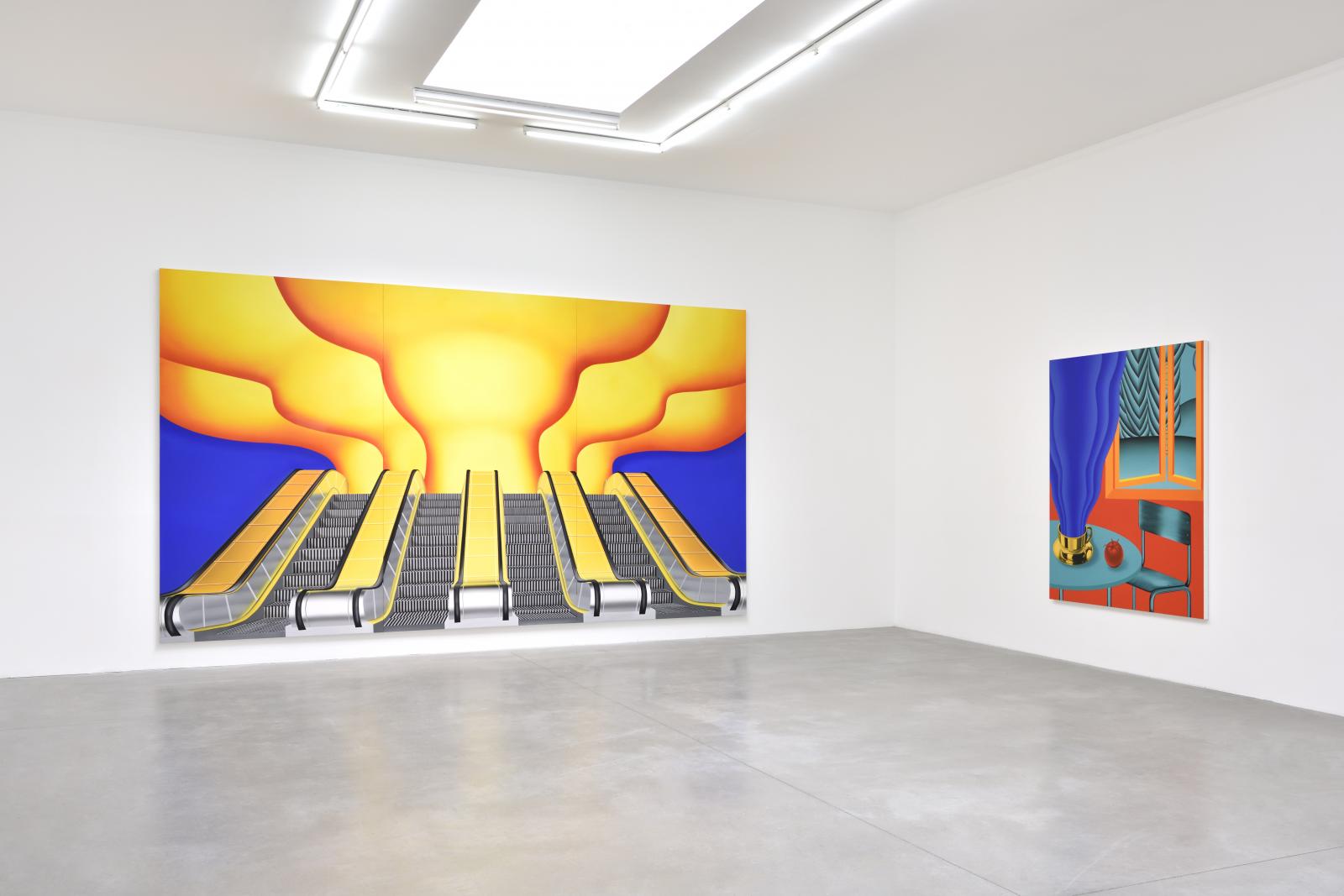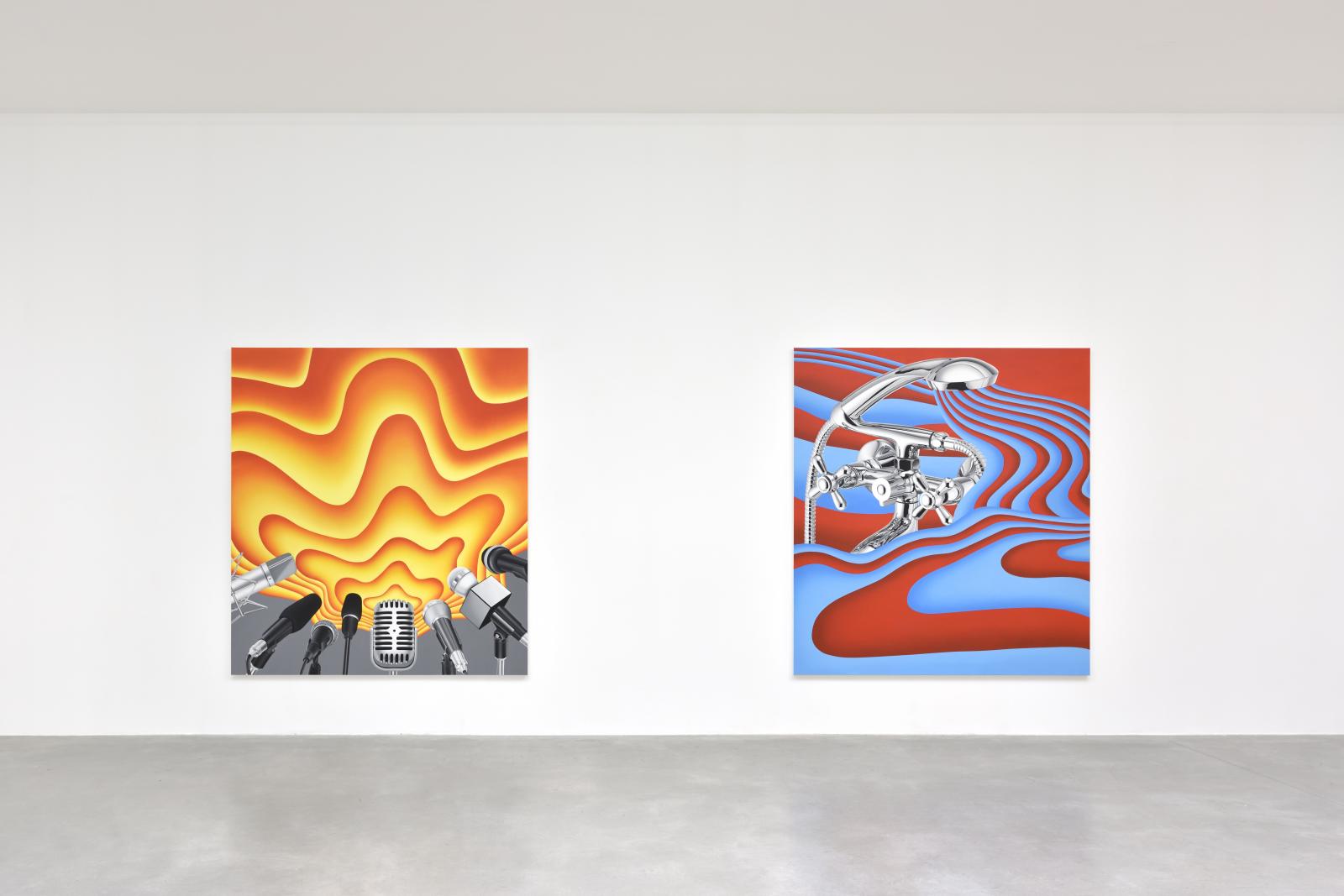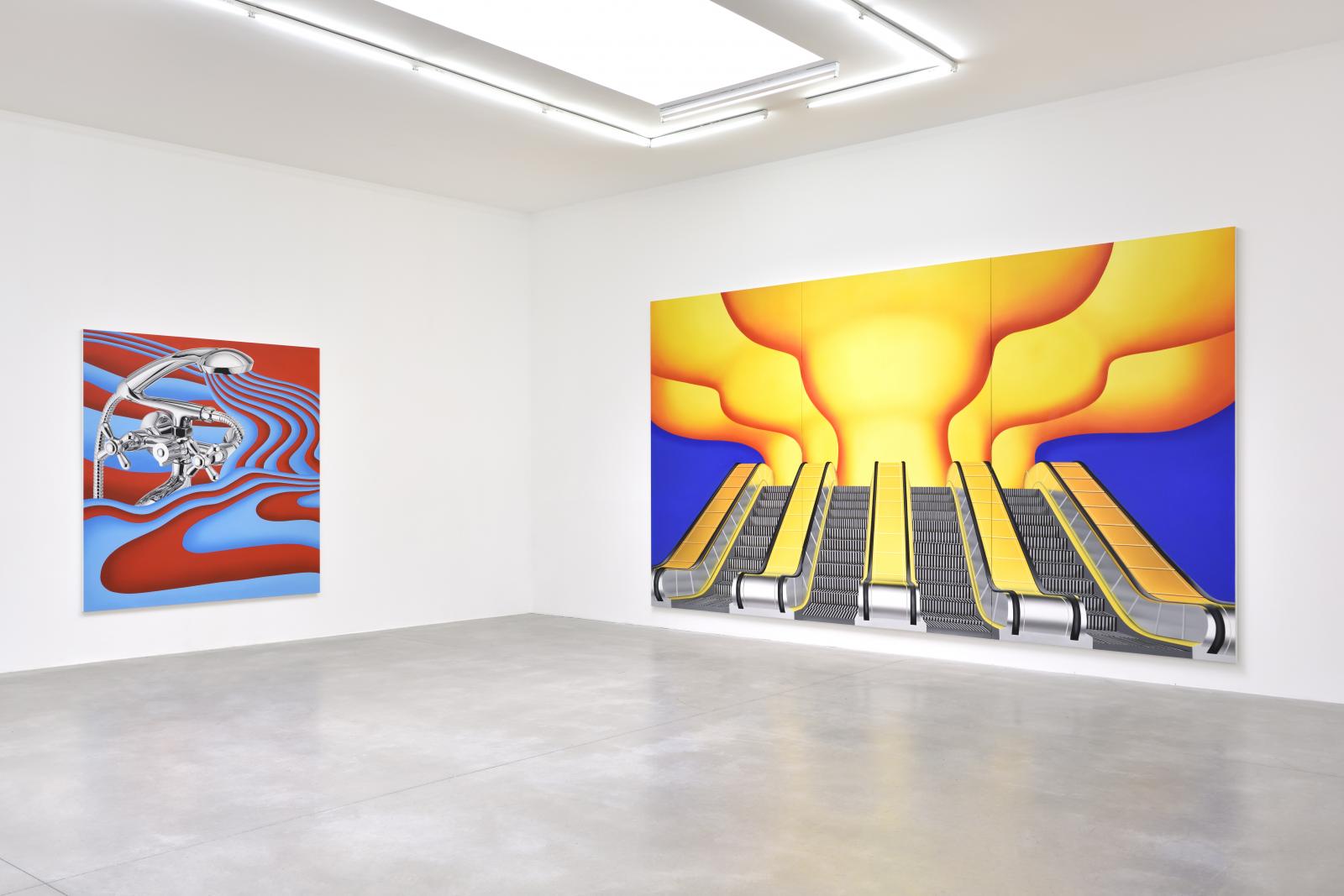Rafa Silvares
L'Almanach 23 : Rafa Silvares
Born in 1984 (Santos, Brésil). lives and works between London and Berlin.
Acknowledgements: Peres Project, Berlin, Séoul, Milan.
Rafa Silvares studied fine arts (2008) and later literature (2021) in Sao Paolo. Reminiscent of Konrad Klapheck and Fortunato Despero, the stylistic universe of his paintings is characterized by a colourful Pop palette.
“I've always been interested in color friction, in graphic illusion and in the surface of painting in general. I would say that I'm more interested in effect rather than in three-dimensionality itself. Special effects in movies like The Wizard of Oz, for instance, where the Wicked Witch appears surrounded by flame and smoke, or the image of the Wizard himself and the vocoder, fire and fog. I find it hilarious because ultimately these are all tricks. Pyrotechnics, magic tricks, car explosions, make-up, costumes. Sometimes watching a tutorial on how to contour a nose and make it look ridiculously pointed, is more exciting than looking at a super expressive painting for me. I'm often trying to explore the playful aspect that painting can provide, similarly to make-up effects or special effects in movies. Chiaroscuro, sfumato, layering, the simulation of wood texture, or a shiny metal reflection on a soldier's armor. All these things excite me in a painting. I enjoy when the work bounces back and forth and at the same time it's flat, in your face.” (Frog magazine n°20, 2022)
Rafa Silvares has created for "L’Almanach 23" a series of new pieces to accompany Silvares’ The Great Curve (2002), a now-famous five-metre painting recently exhibited in Milan. These works push the envelope of abstraction and optical effects.
— Éric Troncy
"With this new group, I wanted to highlight the idea that paintings can produce some sort of electricity when polarized elements come into play —such as warm and cold colors (like those in the Thermal Shock painting), the optical and graphic dimensions, as well as the stark appearance of the metallic objects and the sort of velvety, smoky quality of their rendering. I aim to produce friction to animate the surface of the painting.
I’m also interested in rendering the world of things, vehicles, and the domestic environment in a stylized way, as well as conveying the impression that they might be enchanted, or possessed by an otherworldly force.
With my most recent body of work, I’ve attempted to depict objects that seem to operate independently and continuously. Among other references, one that served as an inspiration for the works is Maiakovsky’s eponymous tragedy Vladimir Mayakovsky (1913) —also known by its working title The Riot of Things— in which machines and objects instigate a mutiny against humans.
However, although figurative and relatively straightforward, the works can also be read metaphorically, as they play with ideas such as personification and objectification. I’d say that I’m more interested in exploring painting itself, its colors, and its phenomenological dimensions than establishing specific narratives and meanings for the compositions.
Moreover, in these works, I also evoke the history of Brazilian painting, and in particular artists such as Tarsila do Amaral, Wanda Pimentel, and Regina Silveira whose interests and visual experimentations resonate with my research."
— Rafa Silvares
